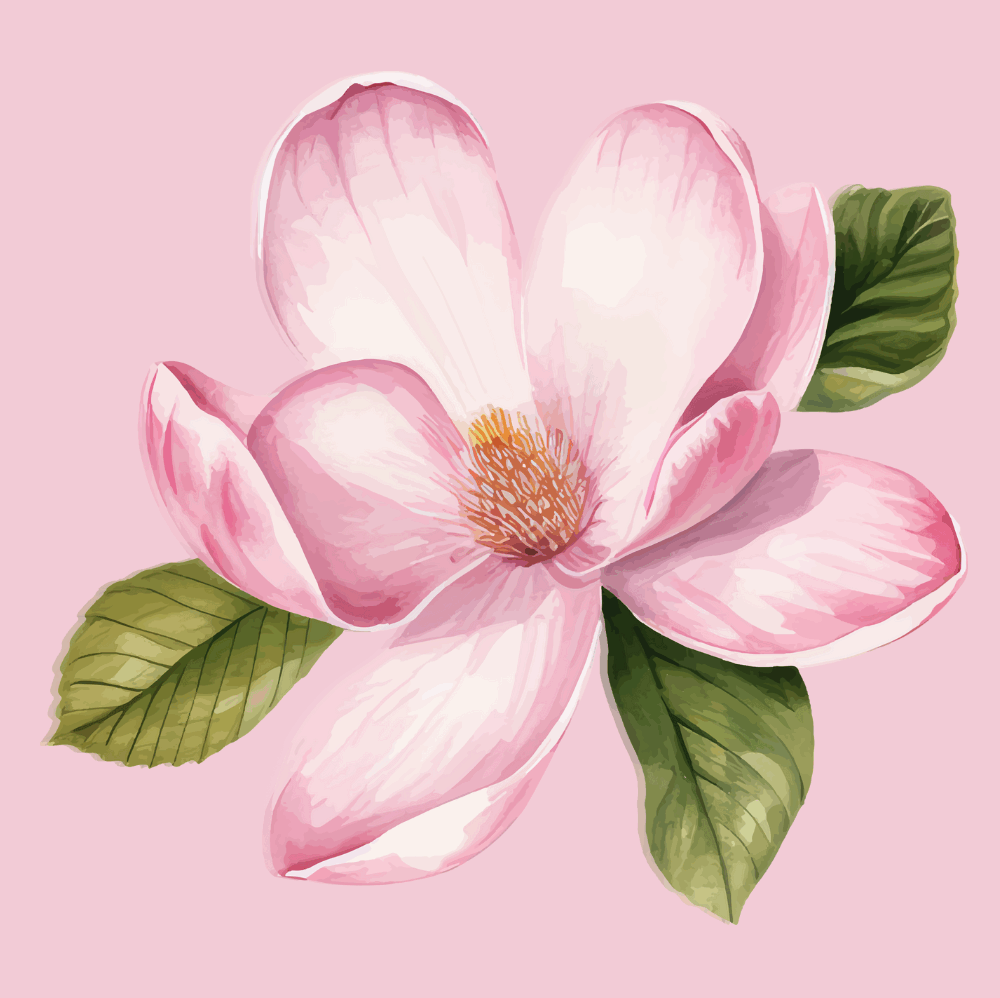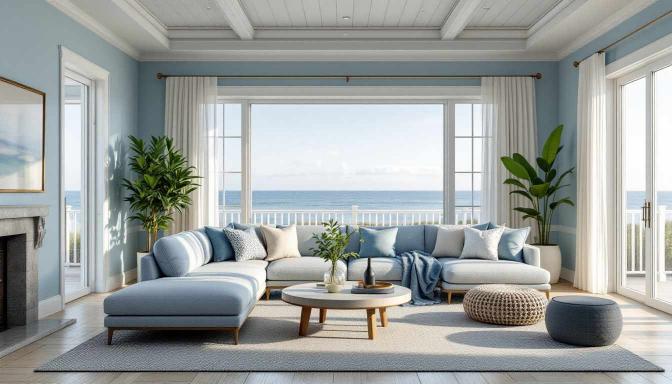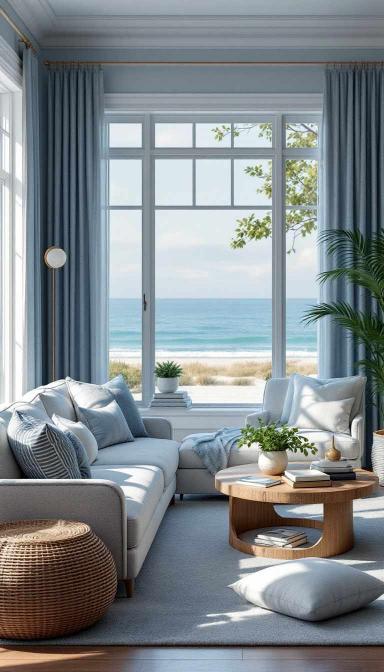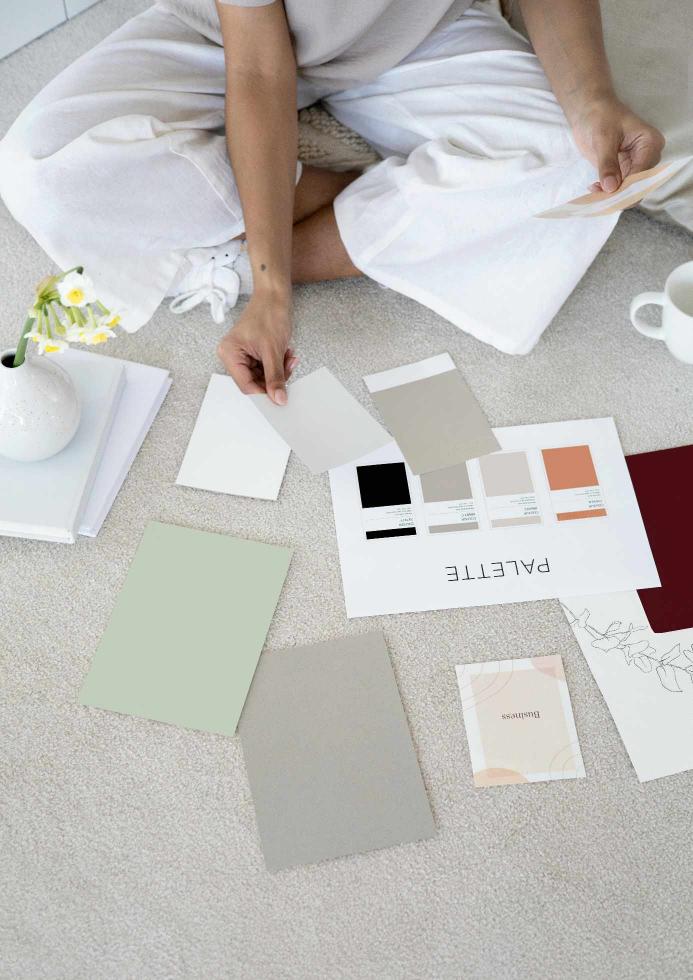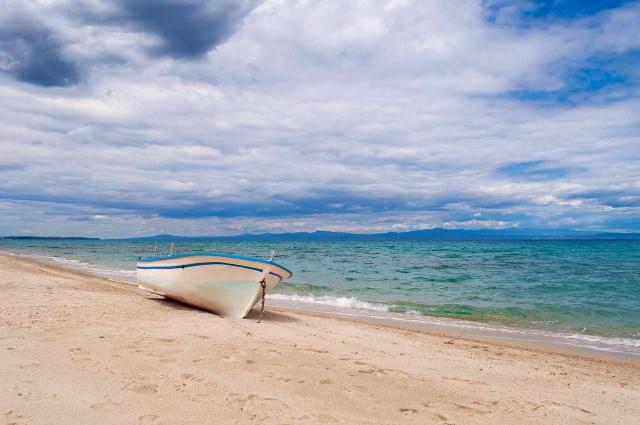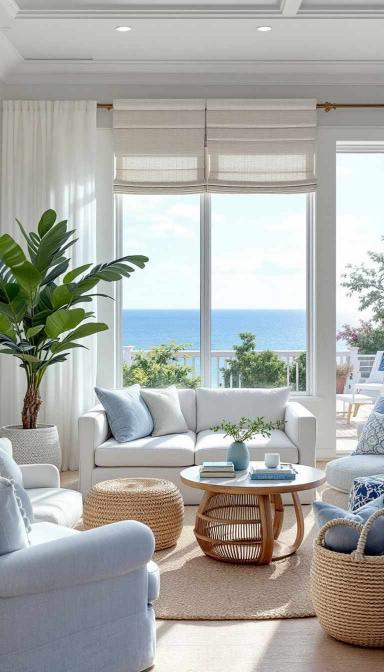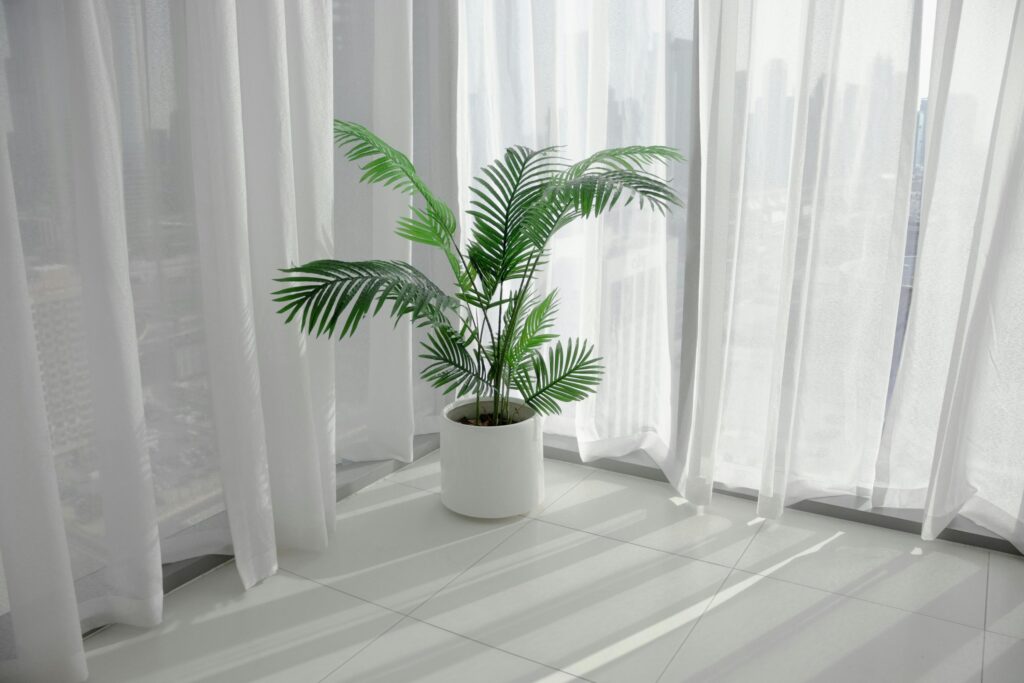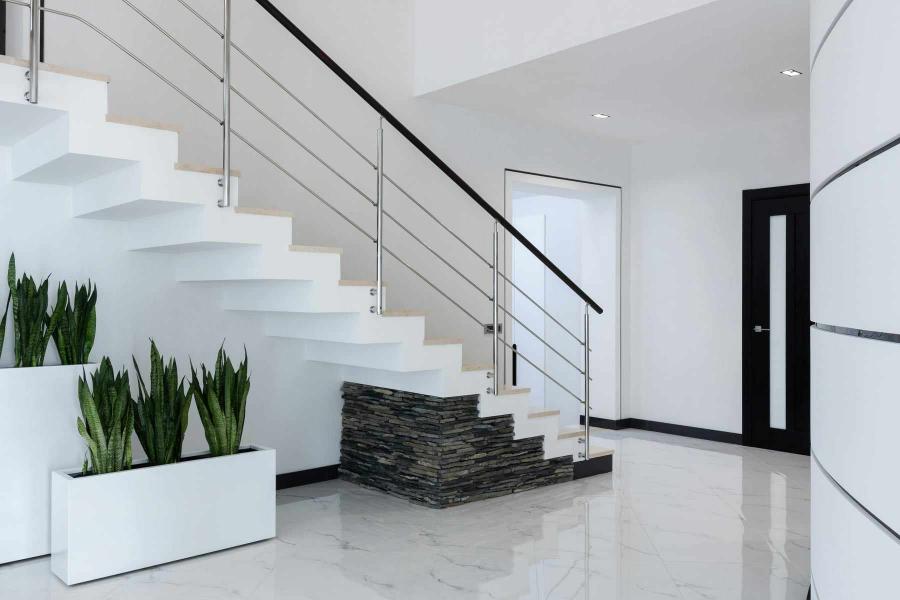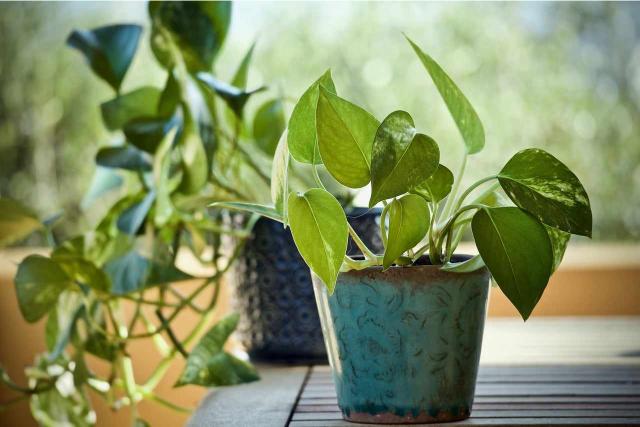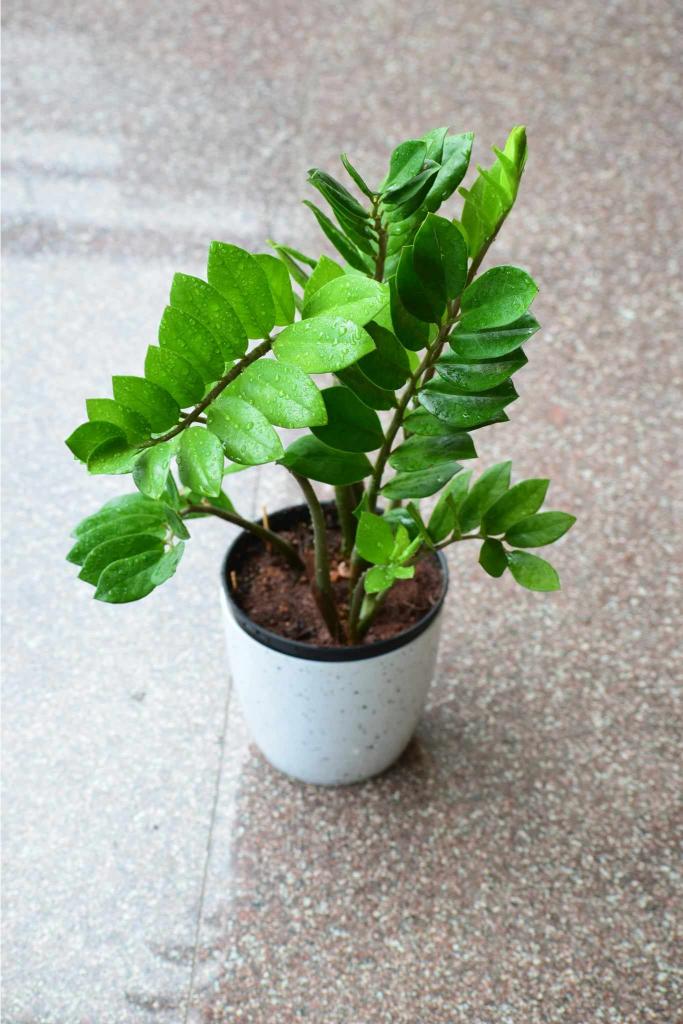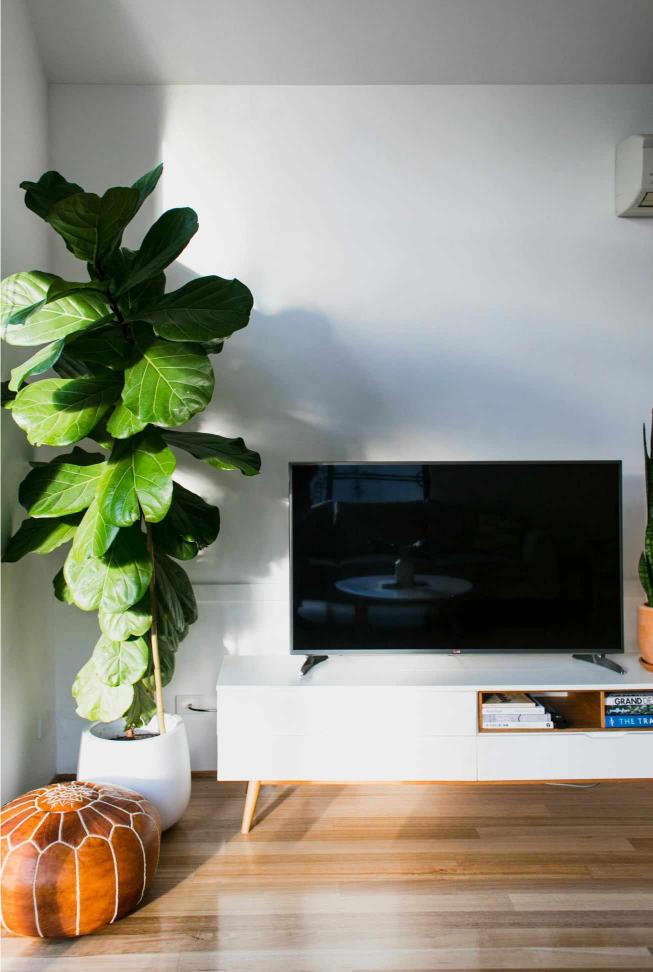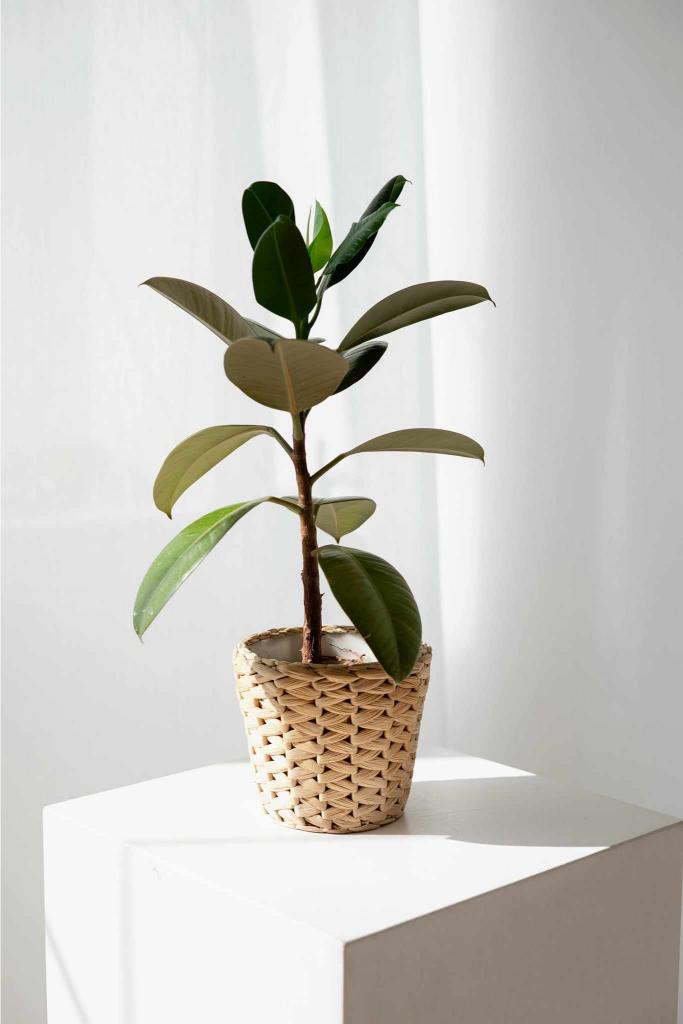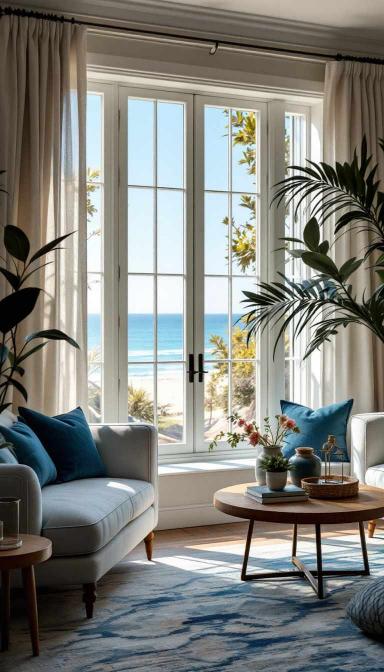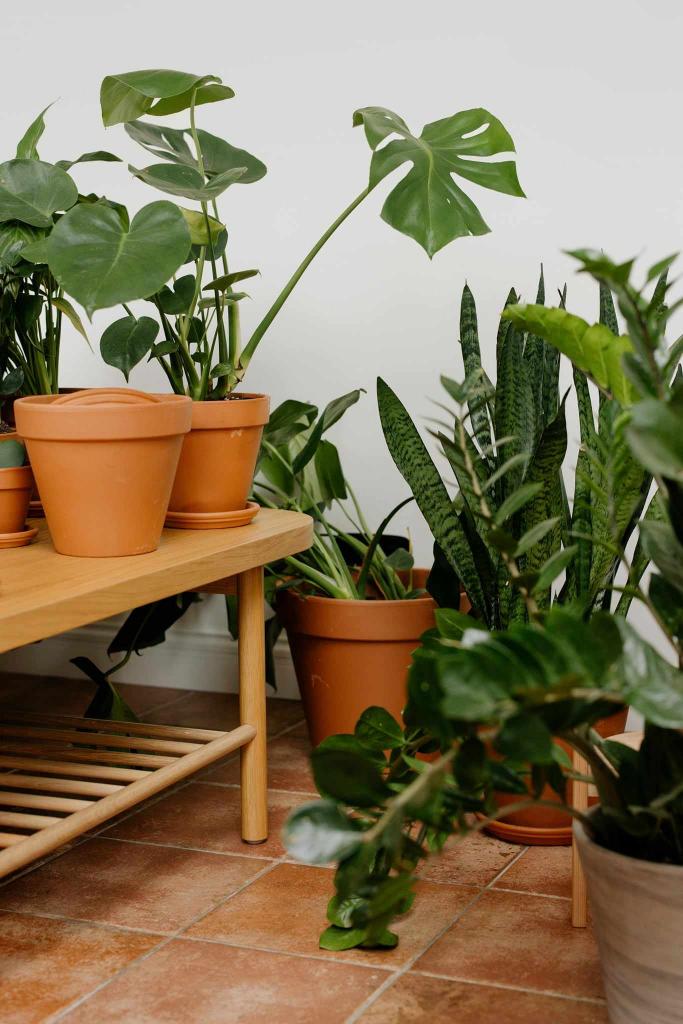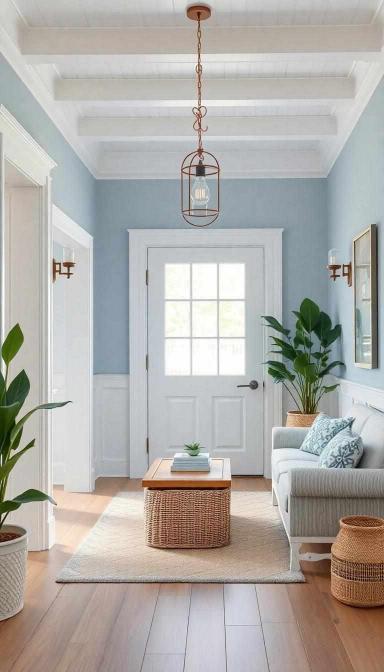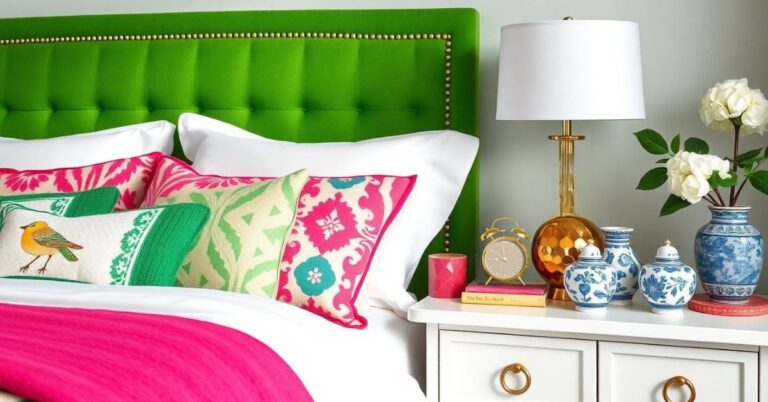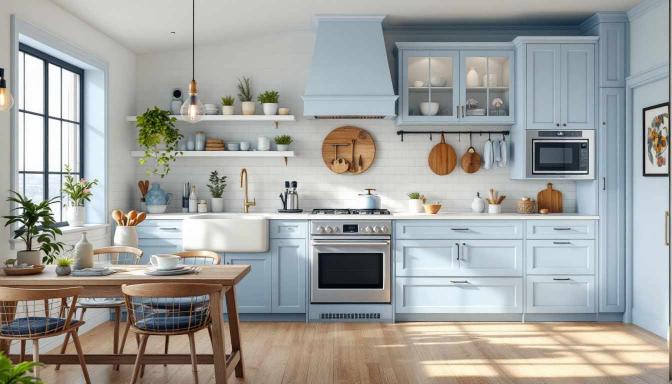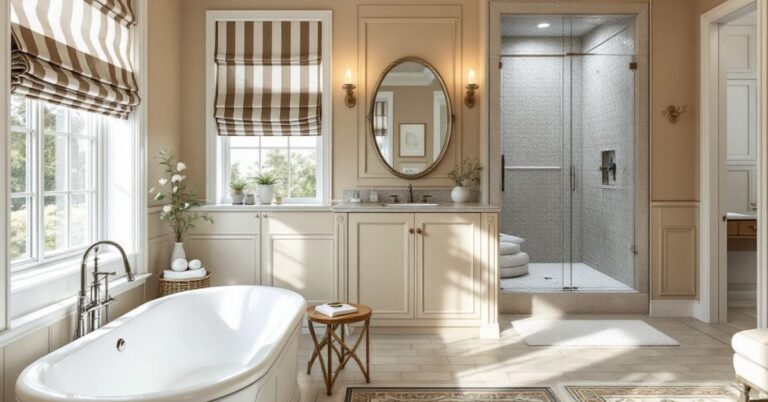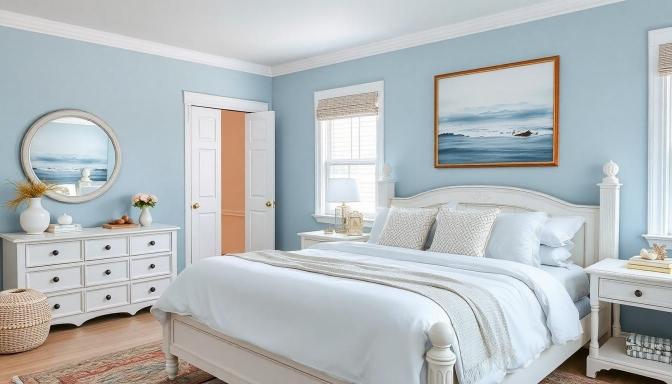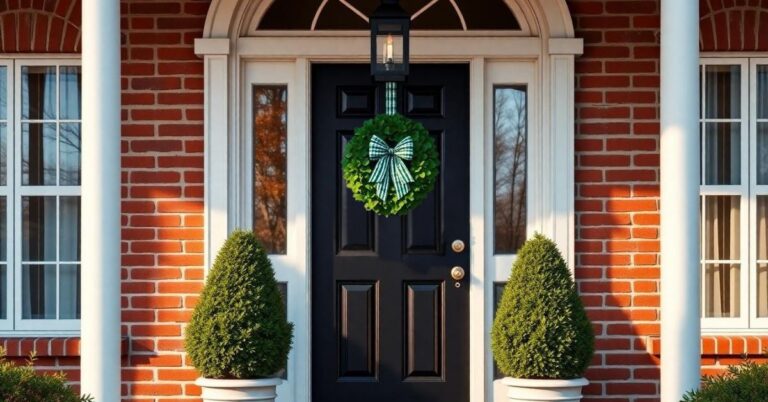The Best Indoor Plants to Complement Coastal Décor Styles
This blog post contains affiliate links.
Having lived near the beach for years, I’ve always been inspired by the coast’s natural beauty. There’s something unique about waking up to the soothing sound of waves and the scent of salty air—it creates a sense of calm that’s impossible to replicate. My home naturally reflects this coastal vibe, with soft colors, breezy textiles, and plenty of sunlight pouring through every corner.
Bringing the calming vibe of the coast into your home is all about creating a light, airy feel. Coastal decor uses soft colors, natural textures, and plenty of sunlight. Adding indoor plants completes the look, bringing life and freshness to your spaces. The right plants don’t just look great—they balance the design and make your home feel more inviting. Let’s explore which ones pair best with this timeless style.
Understanding Coastal Decor
Coastal decor brings the peaceful, breezy feeling of the seaside into your home. It’s inspired by natural elements and oceanic themes, creating a space that feels both refreshing and welcoming. This style is about simplicity, balance, and staying close to nature. Whether you’re furnishing a beach house or want a laid-back vibe in your living room, understanding the key traits of coastal decor will help you enhance it with the perfect indoor plants.
Key Features of Coastal Decor
Coastal decor is defined by its connection to the outdoors and relaxed aesthetic. Here are some of its standout features:
- Light Colors: Coastal spaces rely on soft, neutral tones like white, beige, and sandy hues to create a bright and airy feel.
- Natural Materials: Think woven baskets, driftwood, jute rugs, or furniture made of rattan or bamboo. These textures keep the space feeling grounded.
- Ocean-Inspired Themes: Subtle nods to the sea can include nautical stripes, seashells, coral accents, or art featuring marine life.
- Open, Spacious Design: Coastal decor invites natural light. It leans toward minimalism, avoiding clutter and heavy decor.
These features create the perfect backdrop for greenery. The right plants—leafy and vibrant—can add a fresh layer to the design while enhancing the natural feel.
Color Palette
The coastal color palette is soft and soothing, pulling directly from the seaside surroundings. The base often combines whites, creams, and greys, while accent colors include shades of blue, light greens, and sandy beiges.
Indoor plants can complement these tones beautifully. For example:
- Deep green plants like ferns add contrast to white walls and neutral furniture.
- Silvery foliage—like from eucalyptus—mirrors the softness of ocean mist or cool beach mornings.
- Light green leaves echo the hues of seagrass and dune plants.
Using plants to echo or balance these colors creates harmony in your space, tying everything together seamlessly without overpowering the decor.
Textures and Materials
Coastal decor leans on natural, accessible materials that feel tactile and unpretentious. Popular choices include:
- Wood: Weathered, untreated, or whitewashed wood furniture evokes driftwood found along the shore.
- Woven Fibers: Rattan and wicker create a relaxed, casual atmosphere perfect for breathable furniture.
- Linen and Cotton: Soft, breezy textiles like linen curtains or cushions emphasize comfort and ease.
- Glass Accents: Vases or jars often have a translucent, sea-glass aesthetic.
When choosing indoor plants, consider the planters and how they complement these textures. For instance, a hanging fern in a macramé hanger fits effortlessly with the woven fibers commonly seen in coastal decor. Alternatively, a fiddle-leaf fig in a simple stone or ceramic pot can add a touch of luxury in an understated way.
With these key aspects of coastal decor in mind, you’re ready to find plants that not only fit but elevate the look.
Best Indoor Plants for Coastal Decor
Indoor plants elevate coastal decor by adding life, texture, and natural touch to your space. The right greenery can enhance the airy, relaxed vibe while maintaining a clean, organized aesthetic. Below, we explore some of the best indoor plants to pair with coastal design.
Areca Palms
The Areca Palm, or butterfly palm, is perfect for coastal decor with its feathery, arching fronds that mimic tropical breezes. Thriving in bright, indirect light with slightly moist soil, it’s ideal for sunny rooms. Besides purifying the air, its graceful shape pairs beautifully with natural textures like woven baskets or rattan planters, enhancing the relaxed, coastal vibe. Place it in a spacious spot to let its lush greenery shine as a stunning focal point.
Snake Plant
The snake plant, known as Sansevieria, is a fantastic addition to a coastal-themed home. Its upright leaves and sharp silhouettes echo beachgrass’s simplicity and natural elegance swaying in a gentle breeze. Snake plants are incredibly low-maintenance, making them a perfect choice if you lead a busy life. They thrive in indirect light but can tolerate lower light conditions and only require occasional watering. Their vertical growth won’t take up much floor space, fitting seamlessly into tight corners or atop a console table.
Pothos
With its cascading vines and heart-shaped leaves, Pothos brings a soft and lush feel to coastal spaces. It’s ideal for adding greenery to open shelves, macramé planters, or hanging baskets. Pothos is incredibly forgiving—perfect for beginners or those without a green thumb. Whether in direct or low light, it continues to thrive and only needs watering when the soil is dry. Its rich greenery contrasts beautifully against coastal whites and blues, keeping your decor from feeling flat or overly monochromatic.
ZZ Plant
The ZZ plant, short for Zamioculcas zamiifolia, stands out with its glossy, oval-shaped leaves and structured growth. Its modern and clean appearance complements coastal decor’s natural textures. This plant is tough as nails—it can handle low light, inconsistent watering, and even a bit of neglect. Its resilience makes it perfect for rooms that don’t get heavy sunlight, such as a bathroom or hallway. The ZZ plant’s deep green foliage provides a bold accent that stands out against neutral coastal tones.
Fiddle Leaf Fig
If you’re searching for a plant with a little more drama, the fiddle leaf fig is the one. Its large, sculptural leaves make a striking statement and can be a focal point in any room. This plant pairs beautifully with coastal interiors, adding height and a sense of sophistication without straying from the relaxed style. While it does demand a bit more care—preferring bright, indirect sunlight and consistent watering—the effort is worth it. Place your fiddle leaf fig in a woven basket to complement the natural textures of coastal decor.
Rubber Plant
The rubber plant brings a touch of elegance to coastal spaces with its broad, shiny leaves. It adds a subtle hint of luxury while still keeping things understated. This plant thrives in medium to bright indirect light and doesn’t require frequent watering—just let the soil dry out between waterings. Its deep green hues contrast beautifully with sandy beiges, creating a striking balance. Its upright growth habit adds structure, making it an excellent entryway or living room centerpiece.
By choosing these indoor plants, you’ll reinforce the natural qualities of coastal decor and bring additional texture and warmth to your home. Combined with the breezy elements of this style, these plants help create a space that feels fresh, balanced, and uniquely inviting.
Caring for Indoor Plants in Coastal Decor
Indoor plants are an ideal addition to coastal decor, bringing life and a sense of calm to your space. They soften the design, enhance natural textures, and balance the breezy atmosphere central to this style. However, caring for plants in a coastal-inspired home requires attention to detail. Let’s consider how light, humidity and watering can keep your greenery thriving.
Light Requirements: The Importance of Natural Light
Most indoor plants that suit coastal decor thrive in bright, indirect light. Coastal interiors often invite sunlight through large windows or open layouts, so you’re already ahead of the game.
- Place plants near windows covered with sheer curtains to filter strong sunlight.
- Rotate plants weekly to ensure even light exposure on all sides.
- Low-light areas? Add versatile plants like pothos or ZZ plants, which adapt well to dimmer spots.
Think of sunlight as fuel for your plants. Like you’d protect your coastal furniture from fading under harsh UV rays, you’ll need to shield light-sensitive plants. On the flip side, sunlight-loving species such as fiddle leaf figs will thrive in those sunny corners.
Humidity Levels: Adapting to Coastal Climates
Coastal climates often have higher humidity; many tropical plants love that environment. However, indoor spaces with air conditioning or heating can dry out the air, creating a challenge for your leafy friends.
Here’s how to maintain ideal humidity levels:
- Group plants together to create a microclimate.
- Use a small humidifier, especially in dry rooms.
- Mist plants lightly every few days, especially those with thin leaves like ferns.
ASAKUKI 500ml Premium, Essential Oil Diffuser with Remote Control,
Watering Tips: A Balanced Approach
The laid-back nature of coastal decor can inspire the same attitude toward plant care—but don’t go too relaxed when watering. Overwatering is the most common mistake and can lead to root rot, so tailoring watering to each plant’s needs is essential.
- Check for dry soil: Stick your finger about an inch into the soil. If it’s dry, it’s time to water.
- Err on the side of underwatering: Most indoor plants handle less water better than too much.
- Drainage is key: Always use pots with drainage holes to avoid water buildup.
Creating Your Coastal Indoor Oasis
Adding plants to your coastal-inspired home can bring in that final layer of tranquility and warmth. The right plants, paired with thoughtful arrangements and accessories, make the decor feel intentional without overwhelming the soothing vibe of the space. Here’s how to style and position them for maximum impact.
Plant Grouping Ideas: How to Group Plants for a Balanced Look
Grouping plants creates a cohesive look, but it’s all about balance. Too much greenery can feel chaotic, while sparse arrangements might lack charm. Here are some ideas to keep it balanced:
- Layer Heights: Pair a tall indoor tree, like a fiddle-leaf fig, with medium-height plants such as rubber or snake plants. Add a smaller option, like pothos, for a cascading effect.
- Odd Numbers Work Best: Aim for groupings of three or five plants. Odd-numbered clusters feel more natural and less forced.
- Mix Leaf Sizes: Combine plants with large, smooth leaves (fiddle leaf fig) with textured or smaller-leaf varieties (like ferns or pothos). This creates visual interest without clashing.
- Similar Color Palettes: Stick to greens that complement each other—deep green pairs beautifully with soft silvery or light green foliage.
Try placing your groupings near natural entry points of sunlight or beside a large window. This helps the greenery blend seamlessly with the open, airy coastal design aesthetic.
Using Planters and Pots: Styles That Match Coastal Decor
Your choice of planters can make or break the coastal theme. Your pots should complement the natural feel, not detract from it. Here’s what works best:
- Neutral Colors: Stick to white, sand, or soft gray planters. These neutral tones won’t compete with your plants or decor.
- Natural Textures: Look for ceramic, terracotta, or reclaimed wood pots. Woven baskets or rattan covers add a casual, beachy touch.
- Simple Shapes: Favor clean lines and minimalist designs. Avoid overly ornate pots that can feel out of place in coastal decor.
- Glass Containers: Clear glass vases or jars for water-propagated plants create a sea-glass-inspired aesthetic.
Consider mixing textures, like pairing a smooth white ceramic planter with a woven basket nearby. This combination adds depth and continues the natural vibe.
Placement Suggestions: Where to Put Plants in Your Home
Where you place plants is just as important as which ones you choose. Thoughtful placement enhances natural light and highlights your coastal decor. Here are a few tips:
- Near Windows: Position leafy plants like snake or rubber plants close to bright, filtered light from large windows. Layer sheer curtains to soften any harsh sunlight.
- Corners and Nooks: Fill empty corners with tall plants in woven baskets. They draw attention to underutilized spaces and add height.
- Coastal Shelf Styling: Drape pothos or trailing ivy from floating shelves or open bookcases. This softens the hard edges of furniture.
- Bathrooms: Use humidity-loving plants like ferns or peace lilies in your bathroom. They thrive in the moisture, and their lush look fits right in.
- Entryways: Welcome guests with a statement plant like a fiddle leaf near the doorway—classic coastal without trying too hard.
If you’re working with limited space, try vertical setups. Wall-mounted shelving or hanging macramé baskets make small rooms feel lush without sacrificing floor space.
You’ll create a beautiful and cohesive indoor oasis that aligns perfectly with your coastal decor by considering how plants are arranged, what containers they’re in, and where they’re placed.
Embrace the Coastal Calm
Indoor plants and coastal decor perfectly match nature’s beauty with a calming, airy vibe. The right plants amplify this style’s brightness and natural textures, making your space feel more inviting and serene.
Whether it’s the sculptural grace of a fiddle leaf fig or the simplicity of a snake plant, each choice blends effortlessly into the coastal aesthetic. Careful placement and thoughtful planters complete the look.
Start small or go all in—either way, adding greenery is a simple way to enhance your coastal oasis. Which plant will you try first?
Check out my Coastal Home Pinterest Board for more beachy home decorating ideas!
This blog post may contain affiliate links. If you click on these links and make a purchase, I may earn a commission at no additional cost to you. I only recommend products or services I use and believe will add value to my readers. Please note that I am not responsible for the content, privacy practices, or services of external sites linked within the blog post.
